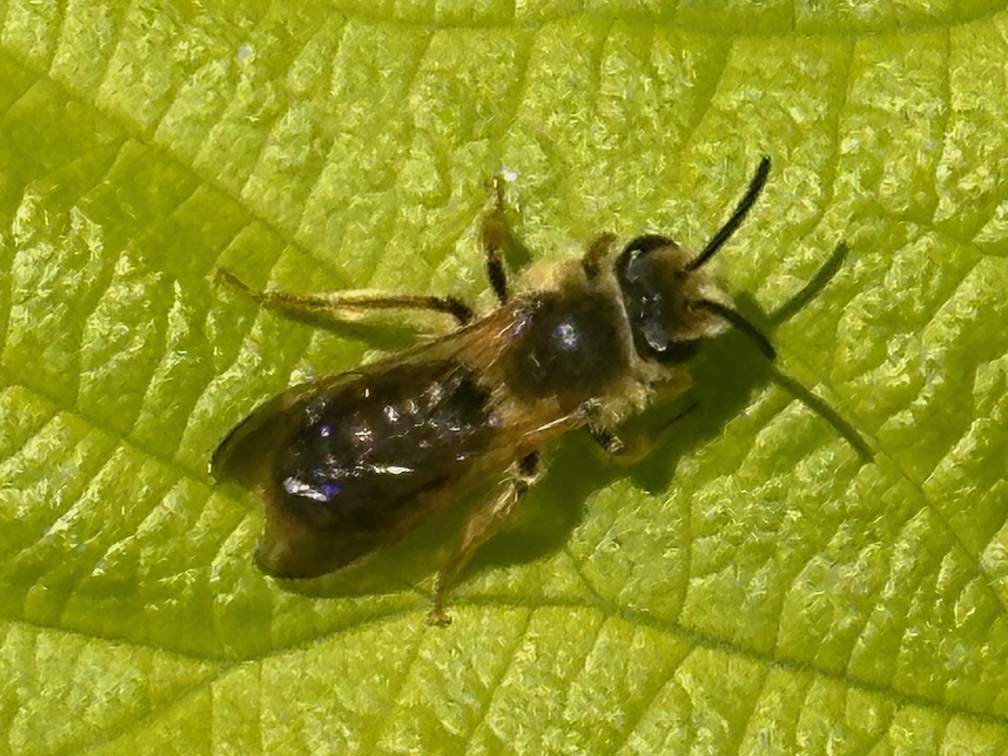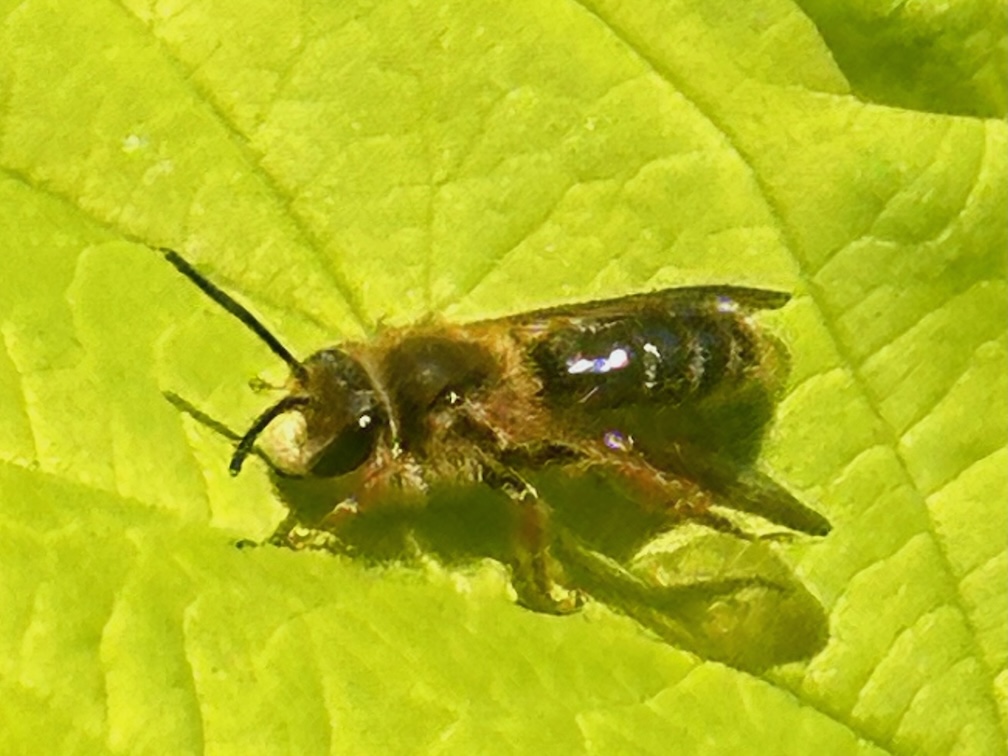by Skip Via
skip@westvalleynaturalists.org
On our back deck just outside our kitchen window, we have a hops plant growing (profusely!) against and over a retaining wall. In the past few days, I’ve noticed that in the late morning hours (9:00 – 11:00 am) the plants leaves are swarmed by dozens of small bees. Curiosity peaked, I decided to see what was going on.

The first step was to find out what kind of bees were doing the swarming. It turns out that these bees are Andrena vicina, or Neighborly (sometimes Neighboring) mining bees–solitary ground nesters that are common from southern Canada down to the midlatitudes of the continental US. They are about the same size as the common honeybee, but they are polar opposites when it comes to nesting. Mining bees don’t form colonies (hives) or have a social structure. They are strict loners. Adult bees dig holes in the ground and then burrow laterally to form egg chambers. They line the insides of their tunnels to waterproof them, although I’m not clear exactly how this is done or what substance they use for this purpose. They stuff each chamber with pollen and perhaps a bit of nectar and a single egg. That food feeds the larvae until adulthood. Adults overwinter in the same tunnels.
Neighborly bees love orchards and are important pollinators for some berries. They can also be found in meadows and woodlands, where they are attracted to a wide range of plants, making them important pollinators in an ecosystem.

The Neighborly bees on my back deck seemed highly attracted to the leaves of our hops plant. The plant is not flowering yet, so no nectar is present. They seemed to be most interested in the leaf’s surface, where they would light momentarily, ruffle their wings, then take off, still swarming around the plant. I first assumed that there were aphids on the leaves, but that was not the case. The hops leaves are bristly, but not sappy or tacky. It’s not clear to me whether or not the bees were consuming anything. See the videos below. The second video might best be viewed full screen.
Hops plants are wind pollinated, so they do not depend on bees for pollination. So what is it about hops leaves (no flowers yet) that attracts these mining bees?
The most likely possibility is that they are simply looking for flowers that haven’t developed yet. They hang around long enough to figure out that there is nothing available to eat and then they take off. That would explain why they show up in the morning and not throughout the day.
But then why aren’t they visiting the many other plants, native and otherwise (alumroot, salvia, flax, nepeta, etc.) that are in full bloom? Why are they so attracted to the hops in such large numbers?
But there’s another intriguing, albeit very remote, possibility. Hops leaves produce a natural insecticide that is effective against the varroa mite, a pest that has been implicated in Colony Collapse Disorder (CCD) that has plagued commercial honeybee colonies in recent years. Bees treated with hop beta acid (HBA) from hops leaves are not affected by varroa mites. Honeybees are not mining bees, and I have no idea whether or not mining bees are plagued by varroa mites. But the remote possibility that these mining bees are availing themselves of a natural insecticide is kind of fun to think about.
Any ideas on this?
